How to Invent a Product
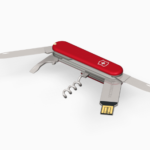
Not everybody can deal with countless hours of brainstorming, prototyping, and marketing to introduce new products into the market. It isn’t an easy process, with the need for continual refining of ideas, rigorous evaluations to determine patent-ability and marketability, and considerable financial capital to build a prototype (like CAD services + 3D modeling services), and finally manufacturing. There isn’t really any easy way to do it, but the result of the process has the potential to be financially rewarding. The method of new product development – from scratch to market penetration – can be broken down into the following nine steps.
1. Brainstorming
 The entire process starts, of course, with the development of ideas. A brilliant idea can come to you out of nowhere, but most often occur when you’re using a product and notice areas that need improvement. It’s typical for people to have complaints about everyday products. Some people choose to express their complaints by merely speaking out their disappointments, while creative individuals are inclined to make proper examinations, pinpoint underlying mistakes or problems, and develop ideas to make the improvements they desire.
The entire process starts, of course, with the development of ideas. A brilliant idea can come to you out of nowhere, but most often occur when you’re using a product and notice areas that need improvement. It’s typical for people to have complaints about everyday products. Some people choose to express their complaints by merely speaking out their disappointments, while creative individuals are inclined to make proper examinations, pinpoint underlying mistakes or problems, and develop ideas to make the improvements they desire.
From the moment the idea is conceived, you’ll need to do some followup work by scrutinizing its details. Brainstorming helps you devise multiple plans on how to bring the idea to fruition. There can be various ways to achieve the same goal. You need to brainstorm these different ideas before you can determine which method is the most viable. Write down all these thoughts in an organized way. Group them based on design approach, difficulty, estimated completion time, materials, cost, etc. Use an inventor’s notebook and make sure to timestamp every record worth noting.
2. Market Research
 Just because you think you have a new idea doesn’t always mean the idea has never been thought of before. Take time for simple market research to see if you can find an existing product that is similar to your innovation. For example, if you want to make a new type of toaster or stroller, browse the internet and visit as many online marketplaces as you can, looking for products that appear to resemble the idea you have in mind.
Just because you think you have a new idea doesn’t always mean the idea has never been thought of before. Take time for simple market research to see if you can find an existing product that is similar to your innovation. For example, if you want to make a new type of toaster or stroller, browse the internet and visit as many online marketplaces as you can, looking for products that appear to resemble the idea you have in mind.
Chances are you’ll find more than a dozen items similar to your concept, whether by design, appearance, dimensions, features, or functions. Crosscheck your notebook and rule out any idea that seems too generic or similar to any of the existing products. Once all the unlikely inventions are eliminated from the notebook, you can focus on an idea that is brand new and likely to see commercial success in the market. Keep the idea to yourself until you are ready to develop a prototype later. In the meantime, keep on improving and refining the notes by adding additional information including the signature of a trusted colleague. An inventor’s notebook signed by a reputable witness is helpful when filing for a patent.
3. Sketching Your Idea
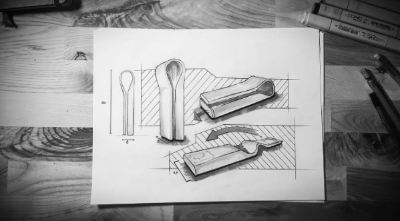 One of the first steps in developing a fully functioning prototype of a product is by drawing some sketches of it, simple two-dimensional representations of how the product will look and function. Although having detailed imagery is always great, there’s no need to push your drawing skills too hard. You don’t have to be an artist to produce simple drawings. The most important part of the sketches is the information attached. Minimize the possibility of producing confusing images and draw your sketch from multiple angles. Each one must include considerable detail, including dimensions, materials, mechanical parts, electrical components, colors, and textures.
One of the first steps in developing a fully functioning prototype of a product is by drawing some sketches of it, simple two-dimensional representations of how the product will look and function. Although having detailed imagery is always great, there’s no need to push your drawing skills too hard. You don’t have to be an artist to produce simple drawings. The most important part of the sketches is the information attached. Minimize the possibility of producing confusing images and draw your sketch from multiple angles. Each one must include considerable detail, including dimensions, materials, mechanical parts, electrical components, colors, and textures.
You may need to draw half a dozen sketches or more to cover all sides of the product. The sketches don’t have to be pretty as long as they’res informative and easy to understand. Sketching in 3D is possible, but it takes serious skills to come up with realistic imagery. This step doesn’t take a lot of equipment. A set of gray markers with different tones and a sketchbook should be adequate. Illustrate any parts of your drawings where you need to give essential details on functionality.
4. Preliminary Innovation Evaluation System (PIES)
 Developed in 1974 at the University of Oregon, the Preliminary Innovation Evaluation System (PIES) is used to help inventors evaluate ideas and inventions in the United States, Canada, and other countries all around the world. The program is still active in many universities. As the name suggests, the program evaluates ideas and innovations to see whether they have any chance of success and, if they do, how good or bad their chances are. PIES evaluation procedures have also been improved over time but generally they include 45 different criteria to determine feasibility and potential for commercialization. Some of the most important elements to evaluate include:
Developed in 1974 at the University of Oregon, the Preliminary Innovation Evaluation System (PIES) is used to help inventors evaluate ideas and inventions in the United States, Canada, and other countries all around the world. The program is still active in many universities. As the name suggests, the program evaluates ideas and innovations to see whether they have any chance of success and, if they do, how good or bad their chances are. PIES evaluation procedures have also been improved over time but generally they include 45 different criteria to determine feasibility and potential for commercialization. Some of the most important elements to evaluate include:
- Functional Feasibility
- Legality
- Production Feasibility
- Environmental Impact
- Safety
- Distribution
- Price
- Existing Competition
- Barriers to Market Entry
- Potential Sales
- Visibility
- Profitability
- Product Life Cycle
- Trend of Demand
- Overall Market Attractiveness
- Overall Risk Assessment
The good thing about PIES – or similar programs at universities – is that it doesn’t require you to actually have a prototype. The program mostly accepts inventions or products at the idea stage. There is no need to file a patent either. Check with a local university to see if such a program exists; if not, ask the university officials where you can sign up for the program. When you do find one, ask if a non-disclosure agreement is necessary to protect your intellectual property.
5. Hiring a Patent Attorney
 Assuming the evaluation report is favorable, then it’s time to get more serious in bringing your idea to the market. To do that, you need to file a patent. Although it’s possible to file a patent on your own, you have a better chance of acquiring one if an attorney submits a patent on your behalf. In the United States, you need to file a patent application with USPTO, and therefore hire an attorney registered with the office to be safe. The patent system is a highly specialized area of law, and you don’t want to be rejected because of technical mistakes. A licensed attorney has the knowledge and experience in writing a technical and highly detailed patent application not only to describe the product but also to avoid loopholes which may result in legal troubles in the future.
Assuming the evaluation report is favorable, then it’s time to get more serious in bringing your idea to the market. To do that, you need to file a patent. Although it’s possible to file a patent on your own, you have a better chance of acquiring one if an attorney submits a patent on your behalf. In the United States, you need to file a patent application with USPTO, and therefore hire an attorney registered with the office to be safe. The patent system is a highly specialized area of law, and you don’t want to be rejected because of technical mistakes. A licensed attorney has the knowledge and experience in writing a technical and highly detailed patent application not only to describe the product but also to avoid loopholes which may result in legal troubles in the future.
According to Investopedia, there is no need to hire a patent attorney who is geographically close to your location. An attorney or legal firm based in a small town is often cheaper than those in larger cities. Don’t worry about communication as you can ask about everything via phone or emails. Look for a firm that offers a free initial consultation. In addition to drafting a comprehensive application, patent attorneys services may include patent research as well. This means you can ask whether your design or innovation is indeed able to be patented under USPTO guidelines.
6. Filing For a Patent
 There are many different types of patents including provisional, non-provisional, plant, and design. Each has a purpose, but the primary goal is to provide legal power that prevents your idea from being stolen. Someone else can only use the same idea with your permission, which often involves royalties. Filing a patent costs money, and is very expensive if a patent attorney is required. Your attorney also has the obligation to provide you with legal counsel about your patent application, so you can ask if you should file for a provisional or non-provisional patent. The latter is more expensive, but it offers better protection.
There are many different types of patents including provisional, non-provisional, plant, and design. Each has a purpose, but the primary goal is to provide legal power that prevents your idea from being stolen. Someone else can only use the same idea with your permission, which often involves royalties. Filing a patent costs money, and is very expensive if a patent attorney is required. Your attorney also has the obligation to provide you with legal counsel about your patent application, so you can ask if you should file for a provisional or non-provisional patent. The latter is more expensive, but it offers better protection.
The main difference between the two is the term of validity; a provisional patent protects your intellectual property for only 12 months, while its non-provisional counterpart is valid for 20 years from the earliest filing date. Once granted, the idea belongs only to you. Other people cannot steal your idea and use it for their benefit without legal consequences.
Remember: Do your homework. The patent system is complicated, and these tips are not a substitute for an attorney.
7. Digital Prototype Design
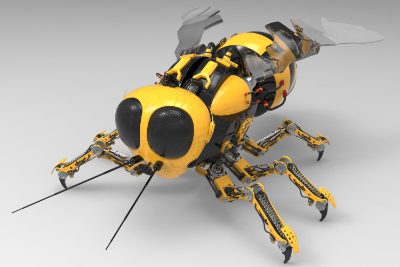
Tip: Even though prototype design is listed as step #7, you may want to develop your new prototype before filing a patent. The downside of filing a patent beforehand is that you can’t make design improvements that fall outside the scope of the initial patent. In other words, if you make an essential design change, you may be forced to file an entirely new patent (at $5,000-$10,000+ per application). If you choose to create a prototype before filing a patent, then it’s essential to keep your design hidden from the public.
Building a working model of your product also can cost a lot of money, depending on the product itself and the complexity of your design. Making a prototype for a sophisticated vehicle such as a car or helicopter is going to be very expensive, but a bicycle or skateboard is much cheaper. On the other hand, simple products like TV remote controls, travel bags, or toothbrushes have fewer financial and technical burdens.
Either way, you can save money by making a digital prototype instead of a physical product. Hiring a professional 3D CAD designer can be relatively affordable. The 3D CAD design industry is crowded with experts; however, it’s essential to hire the right individual. If you spend $10,000 for your patent, then it’s unproductive to hire a college student to make an impractical or boring product. In addition, an expert designer can reduce your overall manufacturing costs by 70% or more. The savings on manufacturing alone can add up to hundreds of thousands of dollars for best-selling products.
An expert 3D designer can create a digital prototype and interactive hyper-realistic imagery for your product. You can zoom in and out, rotate, change colors, alter dimensions, and manipulate your product design for your investor and client sales presentations. Also, professional modelers can create 3D product animations for selling purposes.
8. Prototype Developer
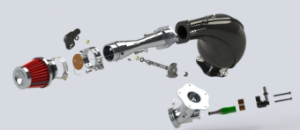 When a physical prototype becomes necessary, you’ll have an easier time building one if you’ve already created a digital version (see step #7). Every single product detail is based on the hyper-realistic imagery created with CAD design and starts with shapes, materials, dimensions, textures, and features. Once again, the complexity of the product determines the difficulty, which then determines the cost.
When a physical prototype becomes necessary, you’ll have an easier time building one if you’ve already created a digital version (see step #7). Every single product detail is based on the hyper-realistic imagery created with CAD design and starts with shapes, materials, dimensions, textures, and features. Once again, the complexity of the product determines the difficulty, which then determines the cost.
A simple product may not require custom manufacturing as you can hire a CNC machinist, sculpture artist, carpenter, electrician, or any handyman with relevant skills to build the product. Complex prototypes with a lot of electrical components or mechanical parts and made of specialized materials will require custom manufacturing to build.
Note: if you don’t yet have a patent when prototyping, at least ask the involved parties with direct knowledge of your ideas to sign a non-disclosure agreement (NDA). In general, the agreement legally binds those parties to NOT disclose any part of the concept to someone else without your permission.
9. Mass-production and Marketing
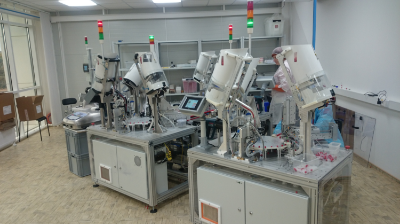 With a prototype in your hand, contact a manufacturer to mass-produce your products. You may have to try multiple times with a lot of different manufacturers before you can find one willing to put your ideas on the production line. Factory partners typically asks for a minimum production quantity in the range of thousands of units, especially when the products are from small business names.
With a prototype in your hand, contact a manufacturer to mass-produce your products. You may have to try multiple times with a lot of different manufacturers before you can find one willing to put your ideas on the production line. Factory partners typically asks for a minimum production quantity in the range of thousands of units, especially when the products are from small business names.
The manufacturer will also want you to cover at least a portion of the overhead cost of acquiring materials, purchasing a new set of equipment to make the product, and labor. It’s not ideal if your product manufacturing costs are high since you’ll have to pass those costs along to the consumer when you set the final sales price. The high manufacturing costs will increase the retail price of your product and ultimately hurt your sales. It’s your job to find the right balance between quality, retail price, and profitability. Let’s not forget that you’ll need a warehouse to store those items and, more importantly, launch a marketing campaign to introduce the product to the world.
As soon as the product reaches the market and you make the first sale, the introduction process is more or less complete. The next step will be making more sales and expanding the market to reach more consumers. Keep in mind that “customer service” is part of the business. You have to stand behind your products and address possible flaws in production in the way you see fit. You can’t release a product and consider the job done. You want your business to be sustainable, and you can ensure it is by building a good relationship with your customers. Think of feedback as constructive ideas to improve the product, distribution system, and manufacturing practices.
Prototypes and Product Design Help
Do you need help designing a new prototype or product idea? We’ve helped thousands of clients hire vetted engineers and freelance 3D modelers over the past decade. You can start by sending us your project details for a free analysis and cost estimate.
